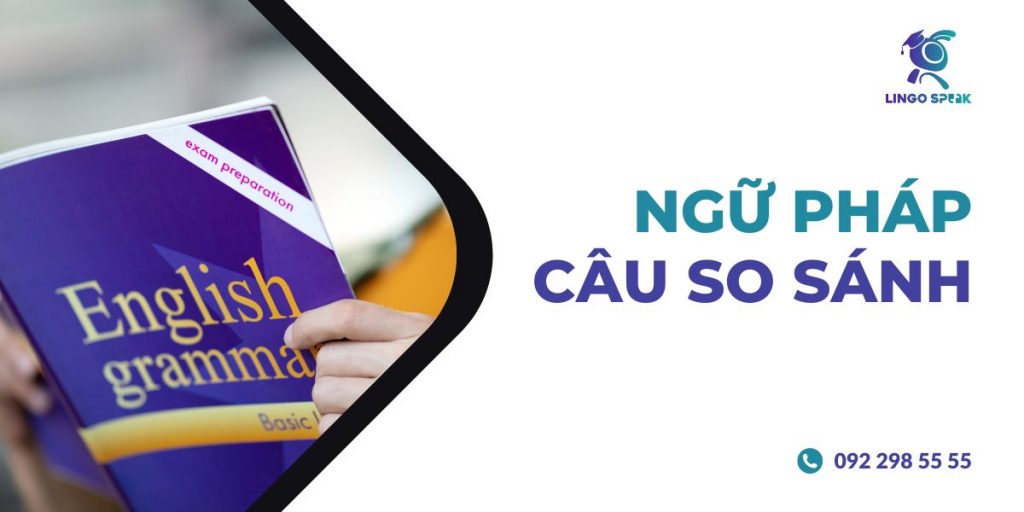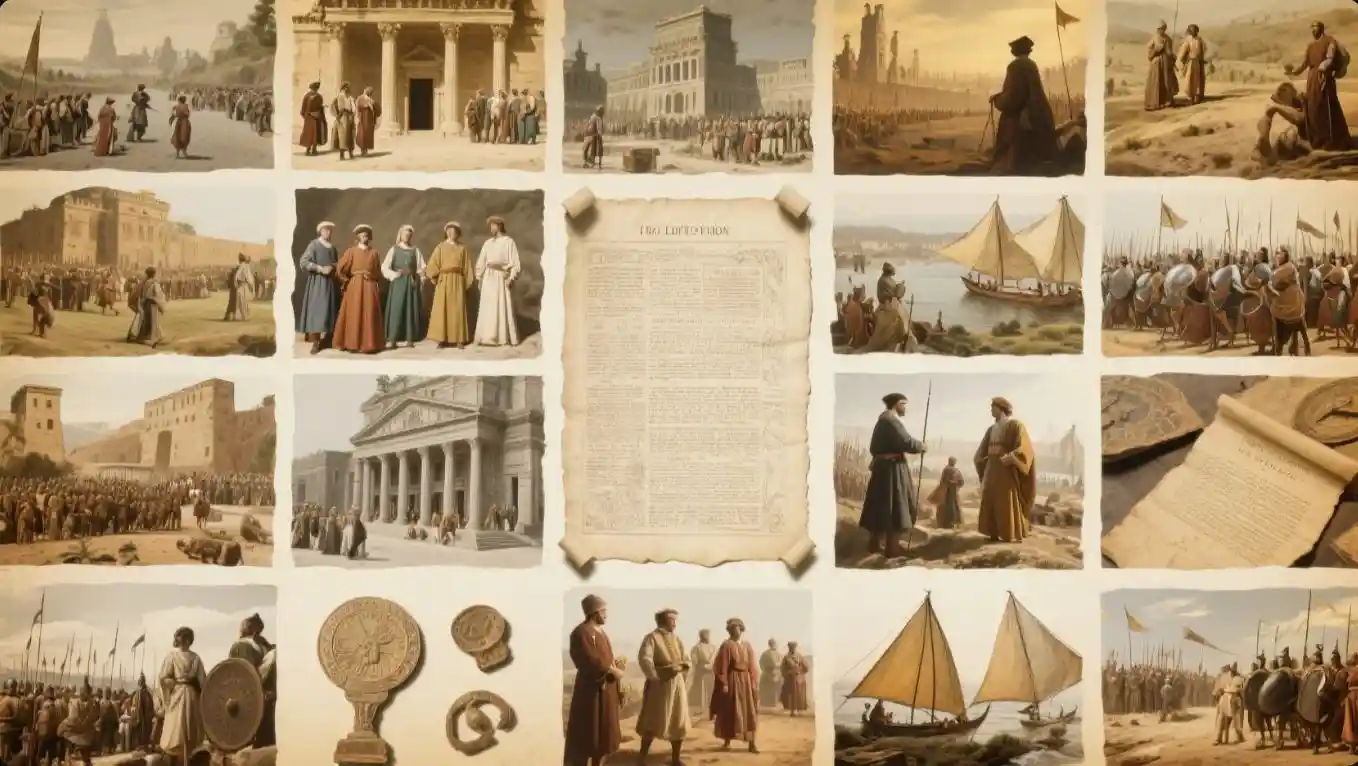Phép so sánh trong tiếng Anh là cách so sánh giữa các tính từ, trạng từ hoặc danh từ để biểu thị mức độ của một đặc tính hoặc tính chất. Có ba dạng phép so sánh chính trong tiếng Anh:
- So sánh bằng (equal comparison): Sử dụng “as…as” để biểu thị sự tương đương giữa hai hoặc nhiều vật hoặc sự vật. Ví dụ: “She is as tall as her brother.”
- So sánh hơn (comparative comparison): Sử dụng “more…than” hoặc “er…than” (trong trường hợp của các tính từ và trạng từ ngắn) để biểu thị sự so sánh giữa hai vật hoặc sự vật. Ví dụ: “This book is more interesting than that one.”
- So sánh nhất (superlative comparison): Sử dụng “the most…”/”the…est” để biểu thị sự so sánh với ba hoặc nhiều hơn hai vật hoặc sự vật. Ví dụ: “She is the tallest girl in the class.”
Các quy tắc và cách sử dụng phép so sánh có thể thay đổi tùy thuộc vào loại từ và ngữ cảnh trong câu.
Tuy nhiên nếu phép so sánh trong tiếng Anh chỉ có như trên thì quá đơn giản, và trong tiếng Anh giao tiếp chắc chắn còn nhiều loai so sánh hơn như bạn nghĩ.
Đọc thêm: 5 phút tóm tắt mệnh đề quan hệ (Relative clause) rất kỹ và còn update.
So sánh nhất
“So sánh nhất” trong tiếng Anh được sử dụng để chỉ ra sự so sánh giữa hai hoặc nhiều đối tượng, đặc tính, hoặc hành động, để xác định đối tượng hoặc hành động đang được so sánh là tốt nhất hoặc xấu nhất trong số chúng. So sánh nhất thường được tạo ra bằng cách thêm hậu tố “-est” vào cuối từ hoặc bằng cách sử dụng từ “most” trước từ.
Ví dụ về so sánh nhất:
- Good (Tốt) – Better (Tốt hơn) – Best (Tốt nhất)
- Example: Sarah is the best student in the class.
- Bad (Tệ) – Worse (Tệ hơn) – Worst (Tệ nhất)
- Example: This is the worst movie I’ve ever seen.
- Big (Lớn) – Bigger (Lớn hơn) – Biggest (Lớn nhất)
- Example: Mount Everest is the biggest mountain in the world.
- Small (Nhỏ) – Smaller (Nhỏ hơn) – Smallest (Nhỏ nhất)
- Example: That’s the smallest puppy in the litter.
- Beautiful (Xinh đẹp) – More beautiful (Xinh đẹp hơn) – Most beautiful (Xinh đẹp nhất)
- Example: She is the most beautiful woman I’ve ever seen.
Những ví dụ trên minh họa cách sử dụng so sánh nhất để so sánh đặc tính hoặc đối tượng trong tiếng Anh.
So sánh kép
Cấu trúc loại 1:
Tính từ ngắn +er AND Tính từ ngắn +er
The weather became colder and colder as winter approached.
Jake’s grades are getting higher and higher with each passing semester.
As the days go by, Sarah’s enthusiasm for her job is growing stronger and stronger.
As the project progresses, the team’s collaboration is becoming smoother and smoother.
Cấu trúc loại 2:
More and more + tính từ dài
Worse and worse + tính từ dài
The children are becoming more and more independent as they grow older.
Over time, Mary’s cooking has become more and more delicious.
The traffic in the city is getting worse and worse every day.
The movie’s plot becomes more and more complex as it unfolds.
With each new recipe, Julia’s baking skills are becoming more and more impressive.
His dedication to fitness is increasing day by day, and his physique is becoming more and more toned.
So sánh hơn

Comparative là cách so sánh giữa hai hoặc nhiều đối tượng, thường sử dụng các từ “more” (hơn) hoặc “less” (ít hơn) để biểu thị sự khác biệt trong mức độ, chất lượng hoặc số lượng.
Ví dụ:
- Tom is taller than Jerry. (Tom cao hơn Jerry.)
- This book is more interesting than the last one I read. (Cuốn sách này thú vị hơn cuốn trước mà tôi đã đọc.)
- My laptop is less expensive than yours. (Máy tính xách tay của tôi ít đắt hơn của bạn.)
- The second movie was less thrilling than the first one. (Bộ phim thứ hai ít hồi hộp hơn bộ phim đầu tiên.)
- I am feeling more tired today than yesterday. (Hôm nay tôi cảm thấy mệt mỏi hơn hôm qua.)
- Her performance was better than mine. (Biểu diễn của cô ấy tốt hơn của tôi.)
- This phone is more expensive, but it has better features. (Chiếc điện thoại này đắt hơn, nhưng nó có tính năng tốt hơn.)
- The weather in summer is hotter than in winter. (Thời tiết mùa hè nóng hơn so với mùa đông.)
- His score on the test was lower than hers. (Điểm số của anh ấy trong bài kiểm tra thấp hơn của cô ấy.)
- The traffic is much worse today than yesterday. (Giao thông tồi tệ hơn nhiều hôm nay so với hôm qua.)
Những ví dụ này minh họa cách sử dụng từ “more” hoặc “less” để so sánh sự khác biệt giữa hai hoặc nhiều đối tượng trong mức độ, chất lượng hoặc số lượng.
So sánh ngang bằng (Equality)
Equality được sử dụng khi hai hoặc nhiều đối tượng có cùng mức độ, chất lượng hoặc số lượng.
Ví dụ:
- Both Sarah and Emily are equally talented musicians.
- The twins share equally in their parents’ inheritance.
- The two cars are equally reliable in terms of performance.
- John and Peter both scored equally well on the exam.
- The two restaurants offer equally delicious food.
- Sarah and Emily are equally passionate about environmental conservation.
- The two laptops are equally powerful in terms of processing speed.
- Both candidates are equally qualified for the job.
- The two teams are equally matched in terms of skill and determination.
- Jack and Jill are equally responsible for the success of the project.
Cấp số nhân (Proportion)
Cấp số nhân được sử dụng để biểu thị mối quan hệ tỷ lệ giữa hai hoặc nhiều đối tượng.
Ví dụ:
- The population of a city doubled every decade for the last century. (Dân số của một thành phố tăng gấp đôi mỗi thập kỷ trong thế kỷ qua.)
- The length of a spring extends by a factor of 1.5 for each additional weight added. (Độ dài của một lò xo gia tăng theo tỷ lệ 1.5 cho mỗi trọng lượng được thêm vào.)
- The value of an investment increases by 10% annually. (Giá trị của một khoản đầu tư tăng 10% hàng năm.)
- The number of bacteria in a culture doubles every hour under optimal conditions. (Số vi khuẩn trong một nền văn hóa tăng gấp đôi mỗi giờ dưới điều kiện lý tưởng.)
- A car travels 60 miles per hour on a highway. (Một chiếc xe ô tô di chuyển 60 dặm mỗi giờ trên một con đường cao tốc.)
- The cost of living has increased by a factor of 1.2 over the past five years. (Chi phí sinh hoạt đã tăng lên theo tỷ lệ 1.2 trong vòng năm năm qua.)
- The length of a rectangle is tripled while its width remains constant. (Độ dài của một hình chữ nhật được nhân ba trong khi độ rộng của nó vẫn giữ nguyên.)
- The volume of a gas decreases by half when the temperature is reduced by 20 degrees Celsius. (Thể tích của một khí giảm đi một nửa khi nhiệt độ giảm xuống 20 độ Celsius.)
- The number of leaves on a tree doubles each spring. (Số lượng lá trên một cây tăng gấp đôi mỗi mùa xuân.)
- The amount of sugar required for a recipe is halved if the serving size is reduced by half. (Lượng đường cần thiết cho một công thức nấu ăn giảm đi một nửa nếu kích thước phục vụ giảm đi một nửa.)
Bài tập luyện tập

Bài tập về So sánh hơn:
- Hoàn thành các câu sau bằng cách sử dụng từ trong ngoặc:
- My house is _______ (big) than yours.
- This exam is _______ (difficult) than the previous one.
- Sarah is _______ (tall) than her brother.
- The new model is _______ (expensive) than the old one.
- Today’s weather is _______ (bad) than yesterday’s.
- Sử dụng từ gợi ý để viết các câu so sánh:
- Example: intelligent / Tom / Peter Answer: Tom is more intelligent than Peter.
- fast / cheetah / lion
- beautiful / sunset / sunrise
- busy / city / village
- friendly / dog / cat
Bài tập về So sánh ngang bằng (Equality):
- Sắp xếp từ gợi ý thành các câu so sánh ngang bằng:
- Example: My car / as / your car / fast Answer: My car is as fast as your car.
- My brother / as / my sister / tall
- This restaurant / as / the one / expensive
- Julia / as / her friend / talented
- This book / as / interesting / the previous one
- Hoàn thành các câu sau bằng cách sử dụng từ trong ngoặc:
- The temperature today is _______ (hot) as yesterday.
- Sarah is _______ (smart) as her sister.
- The blue dress looks _______ (nice) as the red one.
- My salary is _______ (high) as yours.
- This coffee tastes _______ (good) as the one I had yesterday.
Bài tập về So sánh cấp số nhân (Proportion):
- Điền từ còn thiếu vào các câu sau:
- The ratio of boys to girls in the class is 2 _______ 3.
- The recipe requires a proportion of 1 _______ 4 sugar to flour.
- The population of the town increased by _______ (percent) last year.
- The investment grew at a rate of 8 _______ (percent) annually.
- The distance between the two cities is in the ratio of 3 _______ 5.
- Sử dụng từ gợi ý để viết các câu về tỷ lệ:
- Example: 3 / 4 / oranges / apples Answer: The ratio of oranges to apples is 3 to 4.
- 1 / 10 / students / teachers
- 5 / 6 / cups / saucers
- 2 / 5 / boys / girls
- 7 / 9 / days / nights
Đáp án

Bài tập về So sánh kép (Comparative):
- bigger
- more difficult
- taller
- more expensive
- worse
- The cheetah runs faster than the lion.
- The sunset is as beautiful as the sunrise.
- The city is busier than the village.
- The dog is friendlier than the cat.
Bài tập về So sánh ngang bằng (Equality):
- My brother is as tall as my sister.
- This restaurant is as expensive as the one.
- Julia is as talented as her friend.
- This book is as interesting as the previous one.
- as hot
- as smart
- as nice
- as high
- as good
Bài tập về So sánh cấp số nhân (Proportion):
- to
- to
- percent
- percent
- to
- The ratio of students to teachers is 1 to 10.
- The ratio of cups to saucers is 5 to 6.
- The ratio of boys to girls is 2 to 5.
- The ratio of days to nights is 7 to 9.
Hy vọng rằng những đáp án này sẽ giúp bạn kiểm tra và tự kiểm tra kiến thức của mình về so sánh kép, so sánh ngang bằng và so sánh cấp số nhân trong tiếng Anh.











